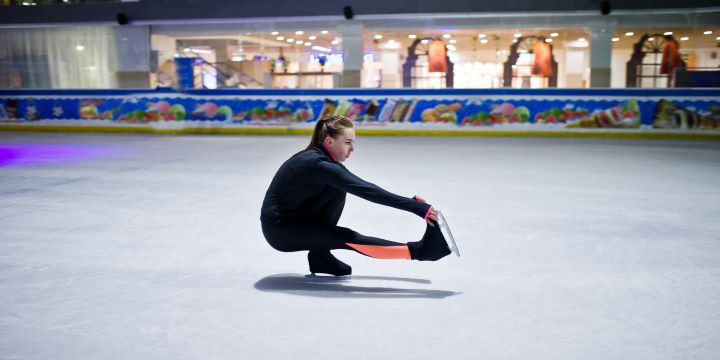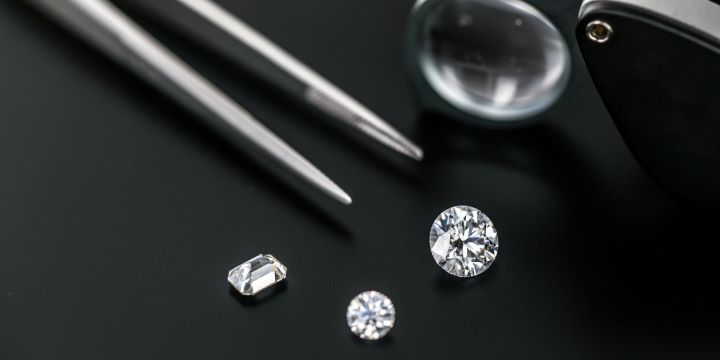Table of Contents:
- Introduction to Ice Rinks
- Advancements in Ice Rink Technology
- Usage and Popularity
- Setting Up Your Synthetic Ice Rink
- The Economic Aspect of Synthetic Ice Rinks
- Health and Safety on Synthetic Ice
- Synthetic Ice for Athletes and Sports Enthusiasts
- The Future of Ice Rinks
- Overcoming Challenges with Synthetic Ice
- The User Perspective
Key Takeaways:
- The natural to synthetic ice journey reflects advancements catering to recreational and professional ice sports.
- Economic and environmental benefits of synthetic ice include reduced energy costs and year-round accessibility for skaters, regardless of their geographical location.
- With technology continually improving, artificial ice surfaces are becoming an increasingly popular alternative for skaters, hockey players, and figure skaters to practice their craft.
Introduction to Ice Rinks
The charm of gliding on ice has enchanted humankind for ages, birthing ice rinks that served as the vanguard for numerous winter sports and leisure activities. Initially confined to regions graced by winter’s cold grip, the evolution toward artificial and eventually synthetic ice surfaces has been a game-changer. In the early days, ice rinks demanded the availability of large bodies of water that would freeze under the right temperature conditions, limiting their presence to specific locales and seasons. Now, the innovation of synthetic ice has unlocked the perennial allure of ice sports, making them accessible in environments once thought impossible. By restructuring the limits of location and climate, synthetic ice has democratized the joy of ice skating, bringing it within reach of a more diverse and broader audience.
Advancements in Ice Rink Technology
Synthetic ice combines engineering and material science knowledge, pushing the boundaries of ice rink technology. The quest to simulate the smoothness and resilience of natural ice has led to the creation of various synthetic composites. These materials are carefully crafted to replicate the essential characteristics of ice down to the molecular level. Innovations have not stopped at mere imitation; they have focused on enhancing the user’s traction and glide, the core features that define the ice skating experience. As such, cutting-edge contributions in the field aim to optimize these surfaces for performance, safety, and endurance. Developing these technologies not only extends indirect benefits to the environment — by significantly reducing the reliance on electricity and water — but also heralds a new era where the term ‘seasonal sport’ becomes archaic. Research continues to optimize the glide on synthetic ice surfaces, pushing boundaries for what can be achieved away from natural ice.
Usage and Popularity
The convenience offered by synthetic ice cannot be overstated. Its robust nature and ease of maintenance have seen its adoption in environments ranging from professional sports complexes to small community centers. Far from being just a training tool for ice-bound sports, synthetic ice rinks are increasingly used for social events, thus redefining typical community interactions. They are garnering popularity among recreational enthusiasts who no longer need to wait for winter to indulge in their favorite pastime. The proliferation of these rinks has transformed old warehouses, backyards, and even cruise ships into hubs of ice skating activity, illustrating synthetic ice’s expanding footprint in recreational and competitive skating.
Setting Up Your Synthetic Ice Rink
Envisioning a synthetic ice rink in your space might seem daunting; however, it is more accessible than one might think. The foremost considerations are the size of the rink and the available area. Will it be a community-sized rink or a private backyard installation? Once the scale is determined, the next step involves sourcing the right panels that interlock seamlessly to create a uniform skating surface. Ongoing maintenance, while less demanding than natural ice, is crucial for preserving the quality of the surface. Proper care includes regular cleaning to remove debris and the occasional resurfacing to maintain optimal conditions for skating. There’s an element of customization, too, whether it’s fencing for safety or thematic decoration to augment the ambiance for users.
The Economic Aspect of Synthetic Ice Rinks
Delving into the economic perspective, the value proposition of synthetic ice is clear. Traditional ice rinks incur significant costs in refrigeration, water consumption, and overall maintenance — all of which are drastically reduced with artificial ice. The upfront cost of synthetic panels is balanced by the longevity and reduced operational expenses, making it a cost-effective solution in the long term. Not to mention, artificial rinks can offer income opportunities through recreational fees or hosting skating-related events. Apart from their financial advantages, these rinks are eco-friendly due to their minimal environmental impact, which aligns with the growing consumer affinity for sustainable choices.
Health and Safety on Synthetic Ice
Skater well-being is a paramount concern on any ice, and synthetic rinks are designed with safety at the forefront. Manufacturers have taken pains to ensure the surfaces are non-toxic and hypoallergenic. Moreover, they are consistent in quality, reducing the risk of accidents related to surface irregularities often found in frozen ponds or poorly maintained natural ice rinks. As for the skaters, the same vigilance that applies to natural ice must be observed on synthetic surfaces — donning protective gear such as helmets, padding, and appropriate skates is recommended. Additionally, users should follow proper hygiene practices, such as keeping the surface clean of contaminants, which helps prevent unnecessary slips and falls and maintains public health standards.
Synthetic Ice for Athletes and Sports Enthusiasts
For competitive athletes, synthetic ice is a boon that facilitates continuous practice and perfecting of techniques. Ice hockey players, for instance, can rehearse their puck handling and shoot with conditions near identical to those in their match arenas. Figure skaters can practice their spins and jump year-round without the hindrance of seasonal closures. Coaches and players alike applaud the utility of synthetic rinks as they condense downtime and foster skill development. Moreover, these installations have been embraced by schools and sports programs, offering students and young athletes an additional avenue to engage with sports, promoting physical activity, and fostering a sports-centric culture.
The Future of Ice Rinks
The trajectory for ice rinks is set towards immense innovation and enduring sustainability. Anticipating ecological concerns and regulatory measures that could affect traditional rink operations, synthetic ice stands out as a viable and responsible choice. Beyond its environmental accolades, synthetic ice’s continual evolution promises even better future experiences. From more efficient self-lubricating surfaces to enhanced panel designs, the expectancy is to maintain the status quo and innovate and improve upon it. The future is bright for skaters as they look forward to advancements that will no longer tether their passion for ice sports to the whims of nature.
Overcoming Challenges with Synthetic Ice
Despite the substantial benefits, adopting synthetic ice comes with a unique set of challenges. One prominent hurdle is the preconceived notion that synthetic ice offers a subpar skating experience — a myth born from unfamiliarity and outdated comparisons. Education about the strides made in this industry and hands-on demonstrations often enlighten skeptics. Other practical concerns involve tackling abrasion resistance and thermal expansion — the bane of any plastic-based product. However, through continued R&D and consumer feedback, the industry is rapidly overcoming these obstacles, enhancing the quality and reputation of synthetic ice products.
The User Perspective
It is essential not to lose sight of the people who use synthetic ice — their satisfaction dictates the success of this innovation. Anecdotes from users frequently underscore the convenience and joy brought into their lives by artificial rinks. Access to skating at any time and the reduced need to travel to distant rinks have been particularly praised. Introducing synthetic ice’s smooth, reliable surface has been transformative for many, breaking down the barriers that once separated them from indulging in their passion for ice sports. As they share their stories and experiences, it becomes clear that synthetic ice is not just an alternative; it’s a new chapter in the long and storied history of ice skating.
As with any evolution, the path from frozen ponds to synthetic panels has been marked by milestones worth exploring further. Acknowledge the strides taken as evidenced by the technological breakthroughs in ice-making during outdoor hockey games, which are both a spectacle and a showcase of ice rink innovation.




